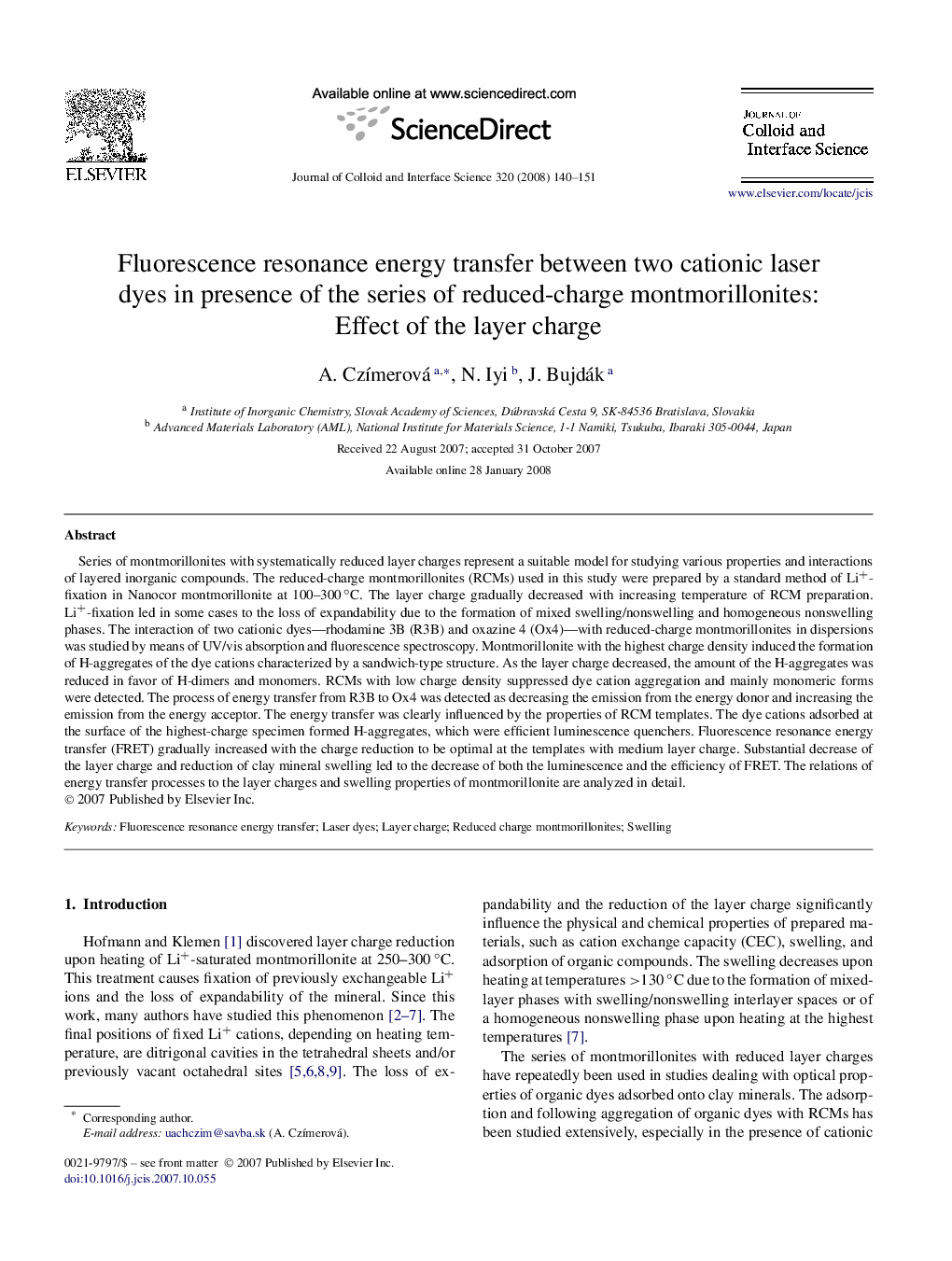| Article ID | Journal | Published Year | Pages | File Type |
|---|---|---|---|---|
| 611627 | Journal of Colloid and Interface Science | 2008 | 12 Pages |
Series of montmorillonites with systematically reduced layer charges represent a suitable model for studying various properties and interactions of layered inorganic compounds. The reduced-charge montmorillonites (RCMs) used in this study were prepared by a standard method of Li+-fixation in Nanocor montmorillonite at 100–300 °C. The layer charge gradually decreased with increasing temperature of RCM preparation. Li+-fixation led in some cases to the loss of expandability due to the formation of mixed swelling/nonswelling and homogeneous nonswelling phases. The interaction of two cationic dyes—rhodamine 3B (R3B) and oxazine 4 (Ox4)—with reduced-charge montmorillonites in dispersions was studied by means of UV/vis absorption and fluorescence spectroscopy. Montmorillonite with the highest charge density induced the formation of H-aggregates of the dye cations characterized by a sandwich-type structure. As the layer charge decreased, the amount of the H-aggregates was reduced in favor of H-dimers and monomers. RCMs with low charge density suppressed dye cation aggregation and mainly monomeric forms were detected. The process of energy transfer from R3B to Ox4 was detected as decreasing the emission from the energy donor and increasing the emission from the energy acceptor. The energy transfer was clearly influenced by the properties of RCM templates. The dye cations adsorbed at the surface of the highest-charge specimen formed H-aggregates, which were efficient luminescence quenchers. Fluorescence resonance energy transfer (FRET) gradually increased with the charge reduction to be optimal at the templates with medium layer charge. Substantial decrease of the layer charge and reduction of clay mineral swelling led to the decrease of both the luminescence and the efficiency of FRET. The relations of energy transfer processes to the layer charges and swelling properties of montmorillonite are analyzed in detail.
Graphical abstractFigure optionsDownload full-size imageDownload as PowerPoint slide
